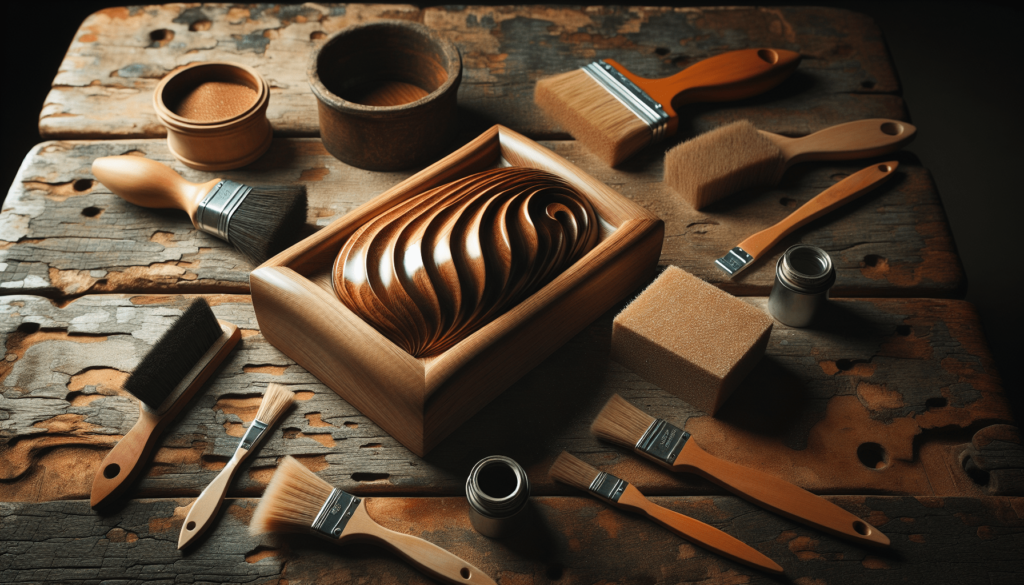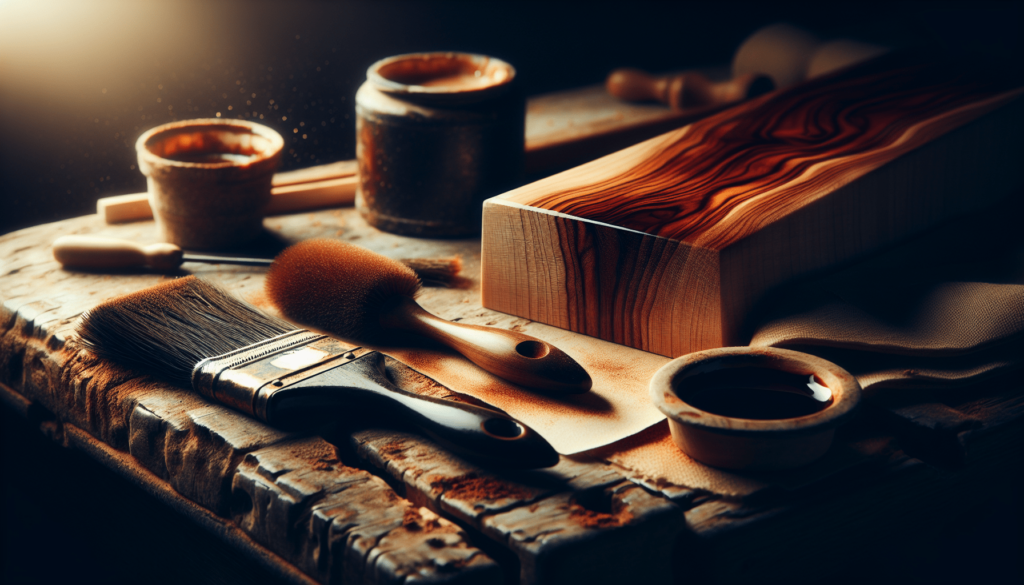What do you put on wood before burning?
It’s a question that seems simple, yet has layers, much like our dear friend the onion. Who knew prepping wood for burning required more than just, well, lighting it on fire? I didn’t. When I first heard someone mention “seasoning wood,” I assumed they were getting it ready for their next culinary masterpiece. Imagine my surprise when I found this was all about keeping those winter nights warm without turning my home into a scene from a chimney fire cautionary tale.
The Basics of Wood Preparation
Before we get into the specifics of what you should put on wood before burning, let’s chat about the basics of wood preparation. Think of this as a prerequisite course. You can’t take Advanced Pyromania without Pyro 101.
Why You Need to Prepare Wood
So why bother preparing wood at all? Can’t you just toss a log in the fireplace and call it good? Well, my friend, you could—if you’re looking for a smoke-filled room and a fire that keeps going out. Prepared wood burns more cleanly, efficiently, and safely. Plus, it makes your fireplace or wood stove more environmentally friendly. Less smoke means fewer pollutants. Also, properly prepared wood ensures that your chimney stays relatively clean, reducing the risk of a chimney fire. You see, it’s all connected.
Types of Wood
In case you’re wondering, not all wood is created equal. Softwoods like pine burn faster and produce more creosote, whereas hardwoods like oak burn slower and hotter. Creosote, in case you’re not up to date on your fireplace vocabulary, is a sticky substance that can build up in your chimney and cause fires. So, choosing the right type of wood is step one in prepping for a safe burn.
Here’s a quick table to illustrate the different types of wood and their burning qualities:
| Wood Type | Burn Rate | Heat Output | Creosote Production |
|---|---|---|---|
| Oak | Slow | High | Low |
| Pine | Fast | Low | High |
| Maple | Medium | Medium | Medium |
| Birch | Fast | Medium | Low |
Seasoning Your Wood
Now that you know the basics, let’s talk seasoning. And no, we’re not talking about salt and pepper. Seasoning wood basically means drying it out so it will burn efficiently. Freshly cut wood, or green wood, contains a lot of water (anywhere from 30-50%), and burning wet wood is like trying to light a damp sponge on fire. Not the best idea.
How to Season Wood
Seasoning wood isn’t rocket science, but it does require some patience—usually six months to a year of it. After cutting your logs, split them into smaller pieces because smaller pieces dry out faster. Stack the wood in a place where it will get plenty of air circulation but also be protected from excessive rain. A wood shed is a good investment if you’re serious about your fireside chats.
Checking Moisture Content
So how do you know when your wood is properly seasoned? Good question. You could go by the old method of banging two pieces together and listening for a sharp, crisp sound, or you could get all techie and use a moisture meter. Aim for less than 20% moisture content for the best burning experience.

Things to Put on Wood Before Burning
Alright, you’ve got your basics down and your wood properly seasoned. Now, onto the main topic: what to put on wood before burning. Why would you put anything on it, you ask? Enhancing the wood’s burning capabilities, reducing smoke, and sometimes just making it smell nicer.
Fire Starters
Let’s start with the basics: fire starters. You need something to get that fire going. Some people like to use crumpled newspaper or dried leaves, but there are a plethora of commercial fire starters available, some of which are really handy. You know you’ve hit the jackpot when you find one that’s waterproof and lights up like the Fourth of July.
Accelerants: The Good and The Bad
Using accelerants can be a bit controversial. There are safe and not-so-safe options here. Let’s break it down:
Good Accelerants
- Charcoal Lighter Fluid: It’s easy to use but can emit harmful fumes. If you use it, make sure you light the fire in a well-ventilated area.
- Alcohol-Based Fire Gel: Burns cleanly and is relatively safe.
- Natural Fatwood: Derived from the resinous heartwood of pine trees. It’s natural and lights easily.
Bad Accelerants
- Gasoline: Just don’t. You may find yourself with more fire than you bargained for.
- Kerosene: While it works, the fumes and residue are not great for either your chimney or your lungs.
Wood Treatments
Believe it or not, sometimes you might want to treat your wood. Water repellent treatments can extend the life of your seasoned wood, especially if it’s stored outside.
Borate Solutions
Borate solutions can be applied to wood to prevent fungus and insect infestations. If you live in a place where termites and wood-boring insects are prevalent, this might be a good idea. Just be sure to give the wood plenty of time to dry out again before burning.
Aromatic Enhancers
Ever sat by a fire and thought, “This wood smells okay, but could it smell better?” Well, here’s a fun fact: you can put aromatic enhancers on your wood to make your fire smell delightful. Common choices include dried orange peels, cinnamon sticks, or even specially designed firewood smell enhancers you can buy online. This makes your house smell like a festive wonderland, minus the hassle of baking cookies or mulling cider.
Creosote Removers
If you’re really into maintaining a clean chimney, using a creosote remover can be beneficial. These are typically powdery substances that you sprinkle onto your fire, and they help break down creosote buildup in your chimney. It’s not a substitute for professional cleaning, but every little bit helps.
Safety Considerations
You thought we were done, didn’t you? Not quite! Safety should always be your top priority when dealing with fire. Let’s go over a few must-know safety tips.
Proper Ventilation
Always ensure your fireplace or wood stove is well-ventilated. Keeping the area around the fireplace clear of flammable materials is crucial. It’s also a good idea to have a fire extinguisher nearby just in case.
Regular Chimney Maintenance
Have your chimney inspected and cleaned at least once a year. Over time, creosote and other residues can build up, increasing the risk of a chimney fire. This is critical especially if you use your fireplace regularly.
Use a Fire Screen
A fire screen can prevent sparks from flying out and igniting your carpet, furniture, or, heaven forbid, Rover’s tail. Fireplace accidents are more common than you think, and a simple screen can make a world of difference.
Dispose of Ashes Safely
Ashes from a wood-burning fire can retain enough heat to reignite for up to three days. Always use a metal container to store ashes and keep it outside, away from your home and any flammable structures.

Environmental Considerations
A lot of people don’t think about the environmental impact of burning wood, but it does matter. Let’s be conscientious fire lovers, shall we?
Choosing Sustainable Wood
Whenever possible, use wood from sustainable sources. This means sourcing from suppliers who practice responsible forestry management. You can also use fallen branches and trees from around your property to minimize waste.
Reducing Pollutants
Burning wood can release particulate matter into the air, contributing to air pollution. Using properly seasoned wood, burning in a well-maintained stove or fireplace, and avoiding accelerants that produce toxic fumes can help minimize your impact. Think of it as your small contribution to cleaner air.
Alternative Burnable Materials
Feeling adventurous and thinking outside the log? There are alternative materials you can burn that might pique your interest. Note: always research and confirm safety before lighting up anything unconventional.
Presto Logs
Presto logs and other manufactured logs are made from compressed sawdust and other materials. They’re uniform in size, easy to store, and some are even designed to burn cleaner than traditional firewood.
Coffee Logs
Yes, you read that right. Coffee logs are made from recycled coffee grounds. They burn hotter and longer than wood, and you get that added benefit of knowing you’re recycling. Plus, the subtle aroma of coffee might be a nice touch.
Biomass Bricks
Made from compressed organic material, biomass bricks are another eco-friendly alternative. They produce consistent heat and are often made from waste materials like straw or hay.
Final Thoughts
There you have it: the ins and outs of what to put on wood before burning. It’s a lot more nuanced than I initially thought. From fire starters to seasoned wood, and from accelerants to aromatic enhancers, there’s a whole world of possibilities out there. Just remember, safety first, and happy burning!

